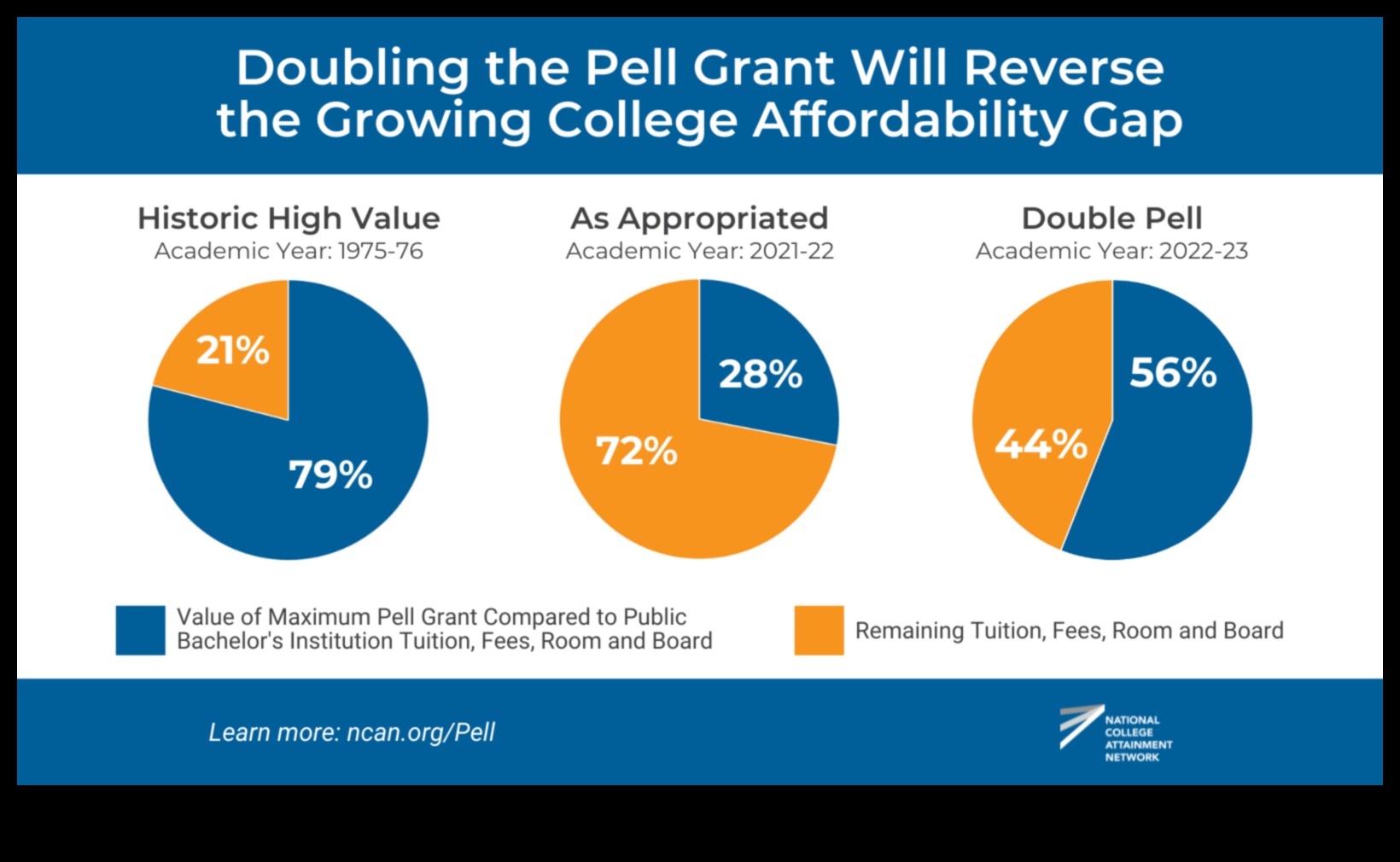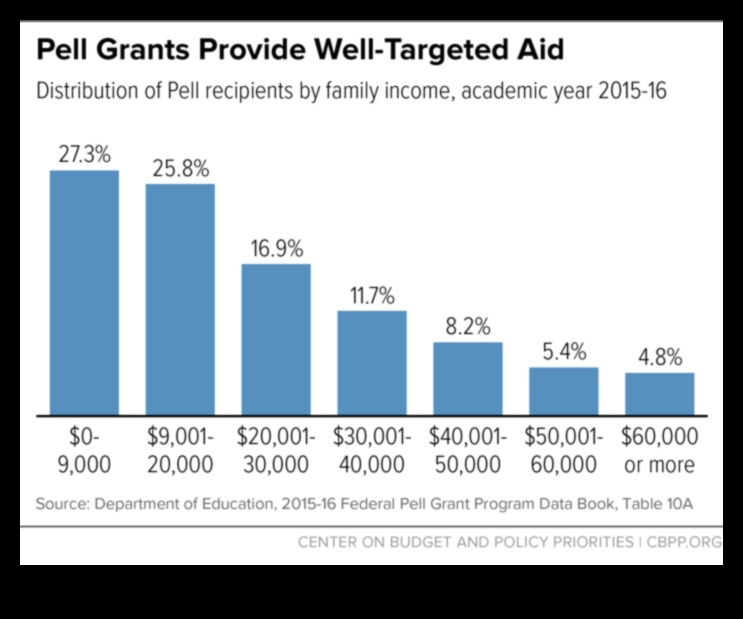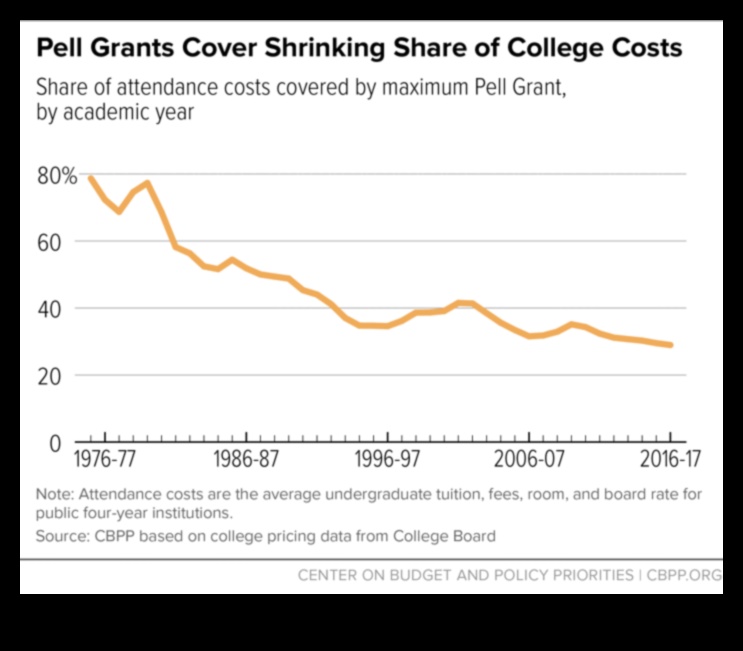
I. What is the Pell Grant?
The Pell Grant is a federal grant program that provides financial assistance to low-income undergraduate students who are enrolled in college or career school. Pell Grants are awarded on a need-based basis, and the amount of the grant that you receive is determined by your financial need and the cost of attendance at your school.
II. Who is eligible for the Pell Grant?
To be eligible for the Pell Grant, you must be a U.S. citizen or eligible noncitizen, and you must be enrolled in a degree or certificate program at an eligible college or career school. You must also meet certain income requirements.
III. How much is the Pell Grant?
The maximum Pell Grant award for the 2022-2023 academic year is $6,495. The amount of the Pell Grant that you receive will depend on your financial need and the cost of attendance at your school.
IV. How do I apply for the Pell Grant?
To apply for the Pell Grant, you must submit the Free Application for Federal Student Aid (FAFSA). The FAFSA is available online at fafsa.gov. You must submit the FAFSA by the priority deadline for your school in order to be considered for the Pell Grant.
V. What are the requirements for the Pell Grant?
To be eligible for the Pell Grant, you must meet the following requirements:
- You must be a U.S. citizen or eligible noncitizen.
- You must be enrolled in a degree or certificate program at an eligible college or career school.
- You must meet certain income requirements.
VI. What are the benefits of the Pell Grant?
The Pell Grant can help you to cover the cost of college or career school. Pell Grants are not loans, so you do not have to repay them. Pell Grants can also help you to save money on interest charges.
VII. What are the drawbacks of the Pell Grant?
The Pell Grant is a need-based grant, so you may not be eligible if your family income is too high. The amount of the Pell Grant that you receive is also limited, so you may need to find other sources of financial aid to cover the cost of college or career school.
VIII. What are the alternatives to the Pell Grant?
If you are not eligible for the Pell Grant, there are a number of other financial aid options available to you. These include federal student loans, private student loans, scholarships, and grants.
IX. How can I get help with the Pell Grant?
If you have any questions about the Pell Grant, you can contact your school’s financial aid office. You can also contact the Federal Student Aid Information Center at 1-800-433-3243.
X. FAQ
- Q: What is the difference between the Pell Grant and a loan?
- A: The Pell Grant is a grant, which means that you do not have to repay it. A loan, on the other hand, is money that you borrow and must repay with interest.
- Q: How much does the Pell Grant cover?
- A: The Pell Grant can cover up to 100% of your cost of attendance, which includes tuition, fees, books, and living expenses.
- Q: What happens if I drop out of school?
- A: If you drop out of school, you may have to repay some or all of your Pell Grant.
- Q: What if I change schools?
- A: If you change schools, you may have to reapply for the Pell Grant.
| Feature | Pell Grant | Federal Student Aid | Financial Aid | College Financial Aid | Scholarships |
|---|---|---|---|---|---|
| What is it? | A federal grant program for low-income undergraduate students | A federal program that provides financial aid to students | Any form of financial assistance provided to students | Financial aid provided to students by colleges and universities | A monetary award given to students based on academic or other criteria |
| Who is eligible? | Students with financial need who are enrolled in at least half-time | Students who are enrolled in college or university | Students who are enrolled in college or university | Students who are enrolled in college or university | Students who meet the criteria of the scholarship |
| How much is it? | $6,495 per year | Varies depending on financial need and cost of attendance | Varies depending on financial need and cost of attendance | Varies depending on financial need and cost of attendance | Varies depending on the scholarship |
| How do I apply? | Complete the Free Application for Federal Student Aid (FAFSA) | Complete the FAFSA | Complete the FAFSA | Complete the FAFSA | Complete the application for the scholarship |
| What are the requirements? | Be a U.S. citizen or permanent resident | Be a U.S. citizen or permanent resident | Be a U.S. citizen or permanent resident | Be a U.S. citizen or permanent resident | Meet the criteria of the scholarship |

II. Who is eligible for the Pell Grant?
The Pell Grant is a federal grant program that is designed to help low-income undergraduate students pay for college. To be eligible for the Pell Grant, you must:
- Be a U.S. citizen or eligible noncitizen
- Be enrolled in an eligible degree or certificate program at an accredited college or university
- Have a financial need
- Have not earned a bachelor’s or higher degree
You can find more information on the eligibility requirements for the Pell Grant on the U.S. Department of Education website.
III. How much is the Pell Grant?
The Pell Grant is a need-based federal grant that helps low-income undergraduate students pay for college. The amount of the Pell Grant you receive depends on your family income and the cost of attendance at your school.
The maximum Pell Grant for the 2022-2023 academic year is $6,495. However, your actual Pell Grant award may be less than the maximum amount if your family income is too high or if the cost of attendance at your school is too low.
You can use the Pell Grant to pay for tuition, fees, books, and other college expenses. You cannot use the Pell Grant to pay for room and board or personal expenses.
If you are eligible for the Pell Grant, you should apply for it as soon as possible. The Pell Grant is awarded on a first-come, first-served basis, and funds are limited.

II. Who is eligible for the Pell Grant?
The Pell Grant is a federal grant program that is available to low-income undergraduate students who are enrolled at least half-time in a degree or certificate program at an eligible institution.
To be eligible for the Pell Grant, you must meet the following criteria:
- You must be a U.S. citizen or eligible noncitizen
- You must have a high school diploma or equivalent
- You must be enrolled at least half-time in a degree or certificate program at an eligible institution
- Your family income must be below a certain level
You can find more information on the eligibility requirements for the Pell Grant on the FAFSA website.

V. What are the requirements for the Pell Grant?
To be eligible for the Pell Grant, you must:
- Be a U.S. citizen or eligible noncitizen
- Be enrolled at least half-time in a degree or certificate program at an eligible institution
- Have a financial need
- Meet the other requirements set by your institution
For more information on the eligibility requirements for the Pell Grant, please visit the Federal Student Aid website.

What is the Pell Grant?
The Pell Grant is a federal grant program that provides financial assistance to low-income undergraduate students who are enrolled in college or career training programs.
VII. What are the drawbacks of the Pell Grant?
There are a few drawbacks to the Pell Grant that students should be aware of before applying.
- The Pell Grant is a need-based grant, which means that students with higher incomes are not eligible.
- The Pell Grant is not renewable, which means that students can only receive it for a maximum of four years.
- The Pell Grant is not a loan, which means that students do not have to repay it. However, students who drop out of school or fail to maintain satisfactory academic progress may be required to repay some or all of the grant.
Despite these drawbacks, the Pell Grant is still a valuable financial aid resource for low-income students. It can help students cover the cost of tuition, books, and living expenses, and it can make it possible for them to pursue a higher education.
Alternatives to the Pell Grant
There are a number of alternatives to the Pell Grant available to low-income undergraduate students. These include:
- Federal student loans
- State grants
- Private scholarships
- Work-study programs
Each of these options has its own advantages and disadvantages, so it is important to carefully consider which one is right for you.
Federal student loans are offered by the U.S. Department of Education. They are available to students who demonstrate financial need, and the interest rates are subsidized by the government. However, student loans must be repaid, and the repayment terms can be quite long.
State grants are offered by individual states. They are typically awarded to students who are residents of the state, and the amount of the grant is based on financial need. State grants do not have to be repaid.
Private scholarships are awarded by private organizations. They are typically awarded to students who have demonstrated academic or extracurricular achievement. Private scholarships do not have to be repaid.
Work-study programs allow students to earn money while they are in school. The money earned from work-study can be used to pay for tuition, fees, books, and other expenses. Work-study programs do not have to be repaid.
It is important to note that not all of these options are available to all students. For example, students who are not U.S. citizens or permanent residents may not be eligible for federal student loans or state grants. Students who do not have a high school diploma or GED may not be eligible for work-study programs.
It is also important to note that the amount of financial aid that you receive will depend on your individual circumstances. The more financial need you demonstrate, the more financial aid you will likely receive.
If you are considering applying for financial aid, it is important to start the process early. The FAFSA (Free Application for Federal Student Aid) is the primary application for federal student aid, and it must be filed each year by March 1. You can find more information about the FAFSA on the U.S. Department of Education website.
There are a few different ways to get help with the Pell Grant.
-
You can contact the financial aid office at your school. They can provide you with information on the Pell Grant and help you with the application process.
-
You can also contact the Federal Student Aid office. They can answer questions about the Pell Grant and help you resolve any problems you may have with your application.
-
Finally, you can also find help online. There are many websites that provide information on the Pell Grant, including the U.S. Department of Education’s website.
If you are having trouble applying for or receiving a Pell Grant, you should contact one of these resources for help.
FAQ
Q: What is the Pell Grant?
A: The Pell Grant is a federal grant program that provides financial assistance to low-income undergraduate students. It is the largest federal student aid program, and it helps millions of students each year pay for college.
Q: Who is eligible for the Pell Grant?
A: To be eligible for the Pell Grant, you must be a U.S. citizen or eligible noncitizen, enrolled in an eligible degree or certificate program at an accredited college or university, and demonstrate financial need.
Q: How much is the Pell Grant?
A: The amount of the Pell Grant you receive depends on your financial need and the cost of attendance at your school. The maximum Pell Grant award for the 2022-2023 academic year is $6,495.